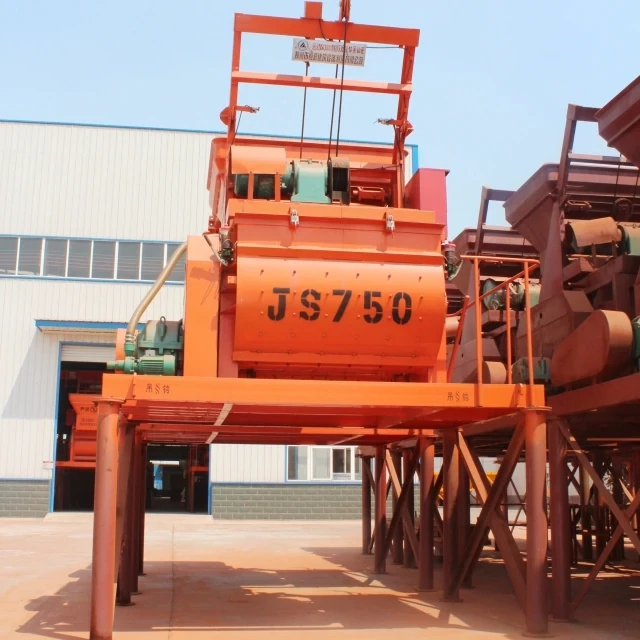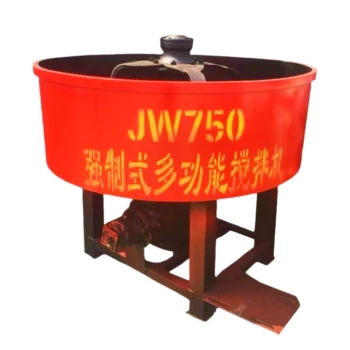Introduction
Thermal expansion and contraction in mixing stations cause more than just operational headaches—they lead to costly component failures and unplanned downtime. This article reveals how leading plants combat thermal stress through material science innovations, mechanical design adaptations, and proven industry standards. Whether you're managing a cement mixer or chemical processing equipment, these solutions apply across industries where temperature swings threaten mechanical integrity.
Thermal Dynamics in Industrial Mixing Systems
How Temperature Fluctuations Impact Component Tolerances
When mixer components heat up, metals expand at rates determined by their coefficient of thermal expansion (CTE). A steel shaft lengthening just 0.5mm per meter at 100°C might seem negligible—until misalignment wears out bearings or cracks weld points.
Critical Consequences:
- Gearbox failures: Uneven expansion distorts gear meshing
- Seal leaks: Differential expansion between shafts and housing
- Structural fatigue: Repeated thermal cycling weakens metal
Ever wondered why some mixer bearings fail within months while others last years? Thermal stress is often the hidden culprit.
Hidden Risks of Unaddressed Thermal Expansion
A Midwest cement plant ignored thermal monitoring on their 20-ton mixer, assuming "seasonal temperature changes were minor." After two winters:
- Cracked mounting flanges from contraction stress
- 52% increase in vibration-related maintenance
- $38,000 in unplanned downtime (per incident)
The solution? Proactive thermal management—not reactive repairs.
Material Science and Mechanical Design Innovations
High-Performance Alloys for Thermal Stability
Not all metals respond equally to heat. Modern mixing stations increasingly use:
| Material | CTE (μm/m°C) | Best For |
|---|---|---|
| Invar 36 | 1.3 | Laser housings |
| 316L Stainless | 16.0 | Acidic environments |
| Carbon-PTFE blend | 25.0 | Non-metallic seals |
Why it matters: A nickel-based alloy with 1/3 the CTE of standard steel maintains tighter tolerances during 200°C mixing processes.
Expansion Compensation Mechanisms in Component Design
Three field-tested approaches:
- Slotted bolt holes: Allow controlled lateral movement
- Bellows couplings: Absorb axial expansion in shafts
- Floating bearing mounts: Prevent distortion forces
Visualize thermal expansion like a bridge's expansion joints—without them, concrete buckles under summer heat. Mixing stations need similar "movement allowances."
Proven Industry Solutions and Best Practices
Case Study: Cement Plant Mixer Shaft Reinforcement
A Brazilian plant using Garlway winch-driven mixers implemented:
- Thermal barrier coatings on shafts (reducing ΔT by 40°C)
- Real-time infrared monitoring with auto-speed adjustment
- Bi-annual ASTM E831 testing for CTE verification
Results:
- 72% reduction in shaft replacements
- 18% longer gearbox lifespan
ASTM Standards for Thermal Stress Testing
Compliance isn't optional. Key tests include:
- ASTM D696: Measures plastic components' CTE
- ASTM E228: Standard test for solid materials
- ASTM E831: Thermal mechanical analysis
Pro Tip: Testing every new material batch catches supplier inconsistencies before they cause field failures.
Conclusion: Turning Thermal Challenges into Reliability
Thermal damage isn't inevitable—it's manageable through:
- Material selection: Prioritize alloys matched to your operating temps
- Design foresight: Build in expansion relief features
- Proactive monitoring: Detect issues before they escalate
For mixing stations supporting heavy construction machinery (like Garlway's equipment), these strategies mean fewer breakdowns and more continuous production cycles. Your next step: Audit one high-risk component this month using ASTM thermal metrics—the data will reveal where to focus first.
Related Products
- Commercial Construction Mixer Machine for Soil Cement Mixing Concrete
- Ready Mixer Machine for Construction Ready Mix Machinery
- Portable Concrete Mixer Machine Equipment for Mixing Concrete
- Hydraulic Concrete Mixer Machine Cement Mixing Equipment for Mixture Concrete
- HZS180 Ready Mix Concrete Plant for Foundations with Sand and Cement
Related Articles
- How to Classify and Resolve Concrete Mixer Hazards with Compliance
- How to Maintain Hydraulic Systems in Concrete Mixers: A Safety-Focused Guide
- How to Choose the Right Concrete Type for Every Construction Challenge
- How to Build an OSHA-Compliant Safety System for Concrete Mixer Workspaces
- Optimizing Concrete Mixer Safety: How Proactive Tire and Suspension Maintenance Prevents Catastrophic Failures















